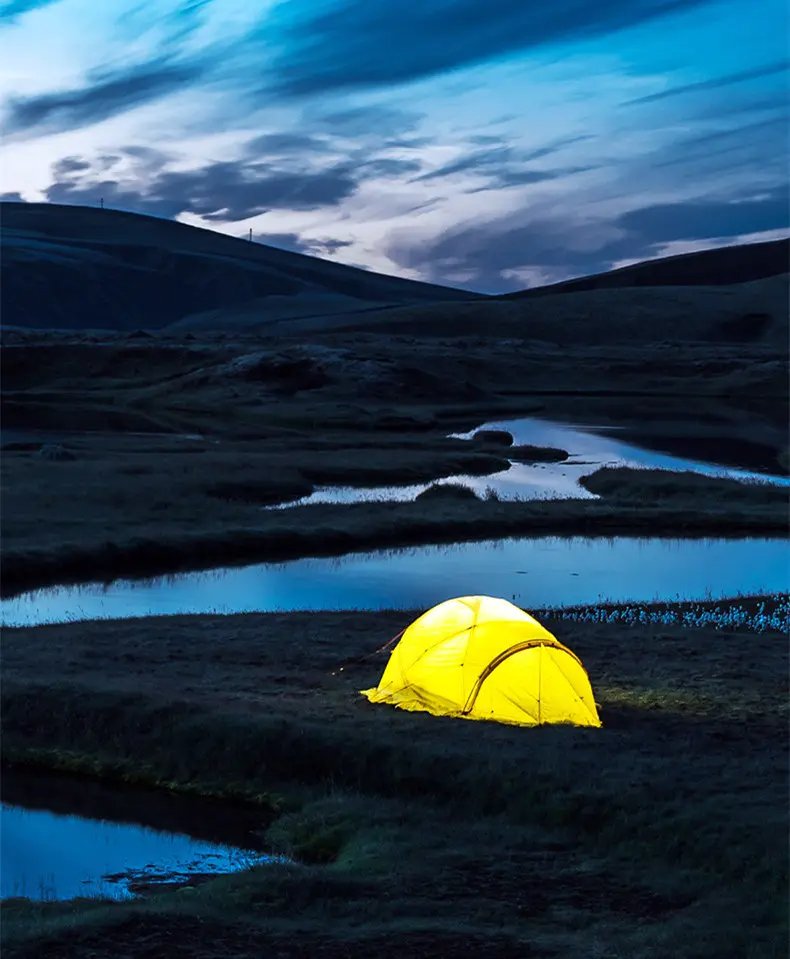- English
- Español
- Português
- русский
- Français
- 日本語
- Deutsch
- tiếng Việt
- Italiano
- Nederlands
- ภาษาไทย
- Polski
- 한국어
- Svenska
- magyar
- Malay
- বাংলা ভাষার
- Dansk
- Suomi
- हिन्दी
- Pilipino
- Türkçe
- Gaeilge
- العربية
- Indonesia
- Norsk
- تمل
- český
- ελληνικά
- український
- Javanese
- فارسی
- தமிழ்
- తెలుగు
- नेपाली
- Burmese
- български
- ລາວ
- Latine
- Қазақша
- Euskal
- Azərbaycan
- Slovenský jazyk
- Македонски
- Lietuvos
- Eesti Keel
- Română
- Slovenski
- मराठी
- Srpski језик
How to choose tents by material and size?
2022-07-09
Friends who are new to outdoor sports will be a little overwhelmed when choosing a tent. There are a variety of tents, which one is right for you? Today, I will share with you a few ways to choose a tent. After learning it, you will never choose the wrong tent again.
First you have to ask yourself 3 questions
1. What season or environment do you want to use the tent in each year?
2. How many people often use your tent?
3. How much do you want to spend?
A 4-season tent is mandatory in winter. If you want to do a polar expedition camp, you must ask someone who has field experience in the polar regions.
If you're camping in the wild in March, October, or November, even if those months aren't strictly winter, the temperature difference between day and night can be quite large. To be on the safe side, it's best to bring a 4-season tentor bring at least one convertible tent.
If you're just planning a leisure trip between May and September, a 3-season account will suffice. If you use tents in spring, summer and autumn, in low altitude areas (below 2000 meters), ordinary PU1000 to 1500 glass pole tents are enough.
Do you usually travel with a partner? If so, you'll need at least a 2-person tent. Also, are both of you big guys? If so, you may need a 2-3 person tent or simply carry a 3-person tent.
Does the number of people you travel with change frequently? If so, you may need multiple tents to accommodate different party sizes. Of course, if you're on a tight budget, buy the one you use the most and rent another one when the number of people traveling together changes. If someone shares the tent with you at night, don't be polite, and share when you are carrying the tent. One person can carry the tent pole, the other can carry the tent, and so on.

Tent selection method 1: Look at the size of the tent
The size of the tent can be selected according to the number of people camping.
If you travel alone, choose a single-person tent; if you want to experience the outdoors with your lover, buy a double tent; if you want to go out with family and friends, buy a 3-4-person tent. Generally speaking, the width occupied by each person is 55 to 60 cm.
When a tent is introduced as a 2-3 person tent, it can be understood as follows: if it is a thin person, 3 people, if it is a fat person, 2 people.
If you use tents in winter and in relatively high-altitude areas, it is recommended that you consult with a professional before purchasing, because such environments are quite dangerous, and equipment plays an important role in critical moments. Generally speaking, such an environment requires an aluminum pole tent with a coating of PU1500 or more.
But keep in mind that tents are not only for people but also for other items, so leave enough space. Many tents have foyers, but they vary in size and quantity, and it's best to take the space needed for the item into account when purchasing.
Tent selection method 2: Look at the tent poles
Many people think that aluminum pole tents are lighter than fiberglass pole tents. The weight of a tent does not depend on what poles it uses.
After the same double FRP pole tent is replaced with an aluminum alloy pole, it can only be about 150 grams lighter, and the FRP pole tent can also be made very light.
The real advantage of the aluminum alloy pole is its durability. The fiberglass pole will break when it is used frequently, and the tent cannot be set up. This problem will also occur at low temperatures.
In addition to bending, the aluminum alloy rod will not break in normal use, and the integrity of the aluminum alloy rod is also better than that of the glass fiber reinforced plastic rod.
Aluminum alloy pole tents are more expensive than fiberglass poles, but not out of reach. Picking the right product for you will reduce the chance of problems on the go.
The following is the description of the tent pole material, you can refer to:
Steel pipe: it is mainly used on large tents such as military tents and disaster relief tents. The surface is sprayed or galvanized. There are around pipes and square pipes. The wall thickness varies from 0.8 to 3 mm.
Elastic rods: These are generally children's tents or beach game tents.
Fiberglass Rod: There are 6.9/7.9/8.5/9.5/11/12.5 series. The thicker the rigidity, the weaker the softness. Therefore, whether the selection of the fiber tube support is reasonable is determined according to the ratio of the size and height of the ground, and it is easy to break if it is too thick or too thin. For example, 210*210*130 is a relatively classic size, and the tube is generally 7.9 or 8.5.
Aluminum alloy rod: It is relatively high-grade, and it is difficult to test according to the alloy ratio. Generally, the overall radian curve of the original bracket is calculated first and then hot-pressed. The feature is that it is light and easy to carry, but it is not easy to fold, the quality is not good and it is easy to bend and deform.
Carbon pole: relatively high-grade, the advantage is that it is very light, which greatly reduces the weight of the tent, but the disadvantage is that it is easier to break than the aluminum alloy frame.

Tent selection method three: look at the fabric
1. Nylon material is relatively light and tough. High-quality tents generally use high-density water-resistant nylon or ripstop nylon.
2. Choose a tent with a dark or silver canopy, which can prevent sunlight and ultraviolet rays and make it easier to fall asleep. When camping in summer, you may wish to buy silver ones. Silver can reflect sunlight and make the camp cooler. If you want to reduce the impact on the natural environment, low-brightness green and brown palladium are good choices; in addition to looking bright, tents in high-brightness colors have the advantage of being easy to search.
3. When buying a tent, don't think bigger is better. Because it is inconvenient to get up and down a tent that is too heavy, it is best to buy a size that is suitable for the number of people. If there are many people there should not be a tent.
4. It is better to choose a dome yurt. The yurt is made of a flexible and bendable fiber rod or an elastic aluminum alloy rod as a camp, without the need for a camp rope, and the shape is arched, like a yurt, hence the name. This tent can withstand strong winds and is suitable for use in high altitudes and harsh weather.
5. The double-layer tent not only solves the problem of water form on the inner wall but also has better wind resistance than single-layer tents. Door-canopy double-decker tents can also solve the problem of storing gear and shoes. Whether it's waterproof to 2000mm or 5000mm of water, this metric is the same for us: moderate to heavy rain is no problem.
Generally speaking:
Below 1500mm is the level of light rain protection;
2000mm-3000mm is the level of protection against moderate rain;
3000mm-4000mm is the level of heavy rain protection;
Above 4000mm is the level of heavy rain protection.



